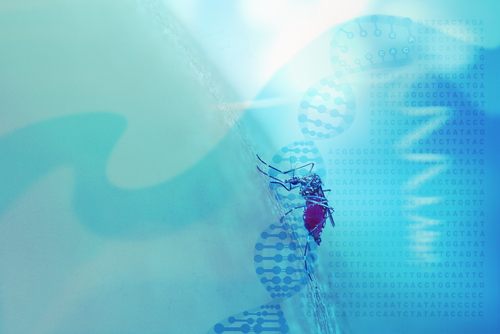Researchers identify possible genetic contributors to malaria resistance
American Society for Microbiology News Feb 15, 2018

Investigators have now identified two new possible contributors to rising resistance to anti-malarial drugs in Southeast Asia. The contributors are a pair of enzymes that digest the malaria parasites’ main food source. The research is published February 12 in Antimicrobial Agents and Chemotherapy, a journal of the American Society for Microbiology.
Once inside the human host, malaria parasites—Plasmodium falciparum—make their homes within red blood cells. There, they live largely on hemoglobin.
The vast majority of malaria patients worldwide are treated with combination therapy. One element of this therapy is a fast-acting drug called artemisinin; the second is a longer-lasting partner drug called piperaquine, with a different mechanism of action. Thus, combination therapy is analogous to attacking an enemy on two fronts.
Earlier, other investigators reported that clinical isolates of malaria parasites taken from patients in whom combination therapy had failed contained extra copies of the two hemoglobin-digesting enzymes. Taking their cue from those reports, co-authors Dave Richard, PhD, and Angana Mukhergee, PhD, both of the Centre de Recherche en Infectiologie du CHU de Québec-Université Laval, Québec City, Canada, genetically engineered a laboratory strain of P. falciparum that lacked genes for the two hemoglobin-digesting enzymes. They found that these parasites had increased susceptibility to piperaquine.
“Interestingly, susceptibility to other structurally similar antimalarial drugs, or to the partner drug, artemisinin, was not affected,” said Dr. Mukherjee, who is a research associate.
More importantly, “Our study provides direct evidence that these enzymes modulate parasite susceptibility to piperaquine in a laboratory reference strain,” said Dr. Richard, who is an associate professor.
A laboratory reference strain is a simpler version of a clinical strain, which makes conducting the research relatively easy. The results are not completely transferable to the clinic. (In clinical strains, a protein called kelch13 is well known to be the primary source of resistance.) “It will now be imperative to assess the importance of the two enzymes in parasites with different genetic backgrounds, and importantly in Cambodian clinical isolates,” said Dr. Mukherjee.
Around 2008, resistance to artemisinin began rising in western Cambodia. By 2015, P. falciparum had become resistant to piperaquine. “There was now a widely recognized threat to treatment efficacy in the Greater Mekong subregion,” said co-author Dr. Richard. “More importantly, if this resistance spreads to sub-Saharan Africa, where the world’s biggest malaria burden is, as it has with older drugs, the consequences are likely to be catastrophic.”
-
Exclusive Write-ups & Webinars by KOLs
-
Daily Quiz by specialty
-
Paid Market Research Surveys
-
Case discussions, News & Journals' summaries